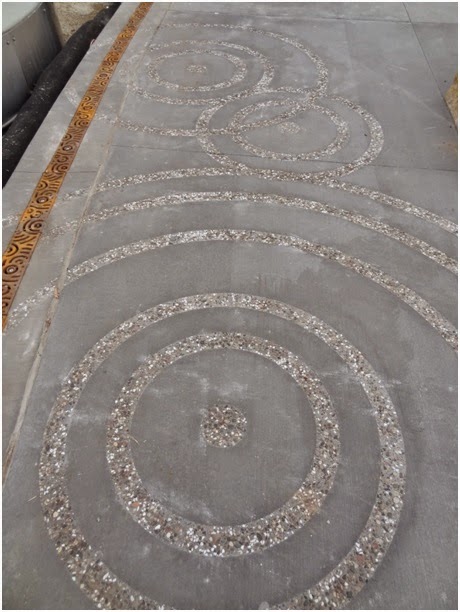By: Cliff Aichinger
What is the role of public art for a Watershed District?
Many of us experience public art every day and yet we may not even know that it was a purposeful addition to our landscape or our public buildings. Public art is not always a sculpture or what we might consider an obvious piece of 'art,' rather we experience it by feeling like a place is beautiful, comfortable or interesting. How is this relevant to an organization like us?
In the past, we often designed water management features or structures in a very practical form. This works well to solve the stormwater problem, but we wanted to go further and let people know why we were doing it. To help with this, the District started incorporating "artistic design" into watershed projects for the purpose of teaching.
By giving an engineered structure an ‘artistic design,’ we open it up to the public and invite them to really look. Doing so allows us to “make the invisible visible,” as the art functions to interpret the purpose of the structure. Curbs or stormdrains could be shaped like waves, concrete could be etched with a flowing water pattern, or downspouts could be designed as rain chains to show water movement. Even rain gardens can be a form of 'living' art with carefully designed plantings to increase the aesthetic of the yard, park or neighborhood.
 |
| A tile mosaic of a wetland scene at RWMWD's office. |
The District has incorporated art into several recent projects and we are exploring other opportunities. We have found that we can accomplish this objective with very minor additional funding, while also increasing the public’s appreciation and understanding of water management and improved water quality. Our involvement started with the construction of our District office building. One of our objectives was to include landscaping features that made water management visible to our visitors, Board and staff. We accomplished this through rain gardens, and roof drainage that made water drainage obvious and visible. Our site shows how much water drains from our roof and the street. We also measure this runoff so we can provide factual information about the runoff and how we manage it.
 | ||
| Ripples near a rain trench on the sidewalk at Maplewood | Mall |
The District largest venture into public art is at the Maplewood Mall, where we have developed a fantastic collaboration with Simon Properties to incorporate public art into our water management interpretive elements at the Malls main entrance. The main entrance includes a huge tile mosaic mural depicting a wetland, city scape, and wildlife. The mural is part of the main entrance interpretive features to convey to the visitors the importance and challenge of water and pollution management in the urban environment. Another public art piece will be added to the northwest entrance this summer as part of collaborative project with the artist, Forecast Public Art, the District and Simon Properties.
We also incorporated the rain drop ripples into the Maplewood Living Streets sidewalks to illustrate rainwater management at each of the 32 rain gardens.
 |
| Rain drop ripples highlight the new rain gardens in Maplewood's Living Streets project. |
The District will be completing the Public Art Plan this summer. We hope to develop a funding approach that will allow us to accumulate a modest budget for future appropriate projects.


































.jpg)
















